Key takeaways:
- Understanding and tracking inventory KPIs like Days Sales of Inventory (DSI) and Carrying Costs can enhance inventory management and profitability.
- Key KPIs such as Fill Rate and Stockout Rate directly affect customer satisfaction and operational efficiency, revealing the need for action and strategy adjustments.
- Implementing KPIs effectively requires setting clear, actionable goals, frequent reviews, and fostering team communication to ensure alignment and continuous improvement.
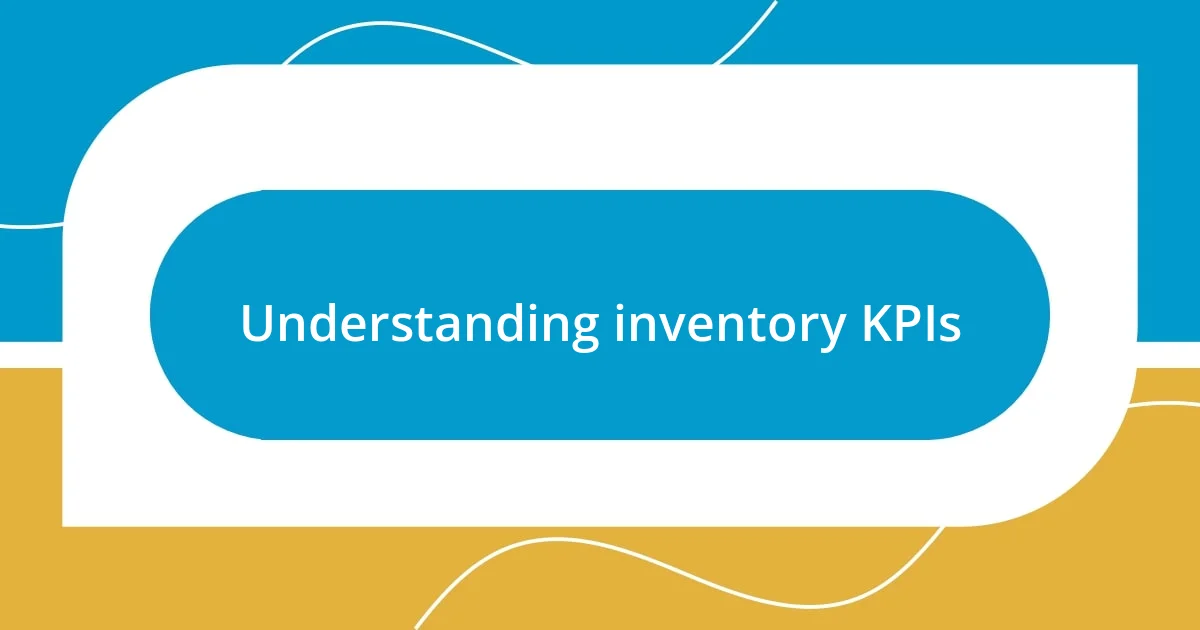
Understanding inventory KPIs
Understanding inventory KPIs can feel overwhelming at first, but I remember when I first delved into them, it was like unlocking a treasure trove of insights. Key Performance Indicators, or KPIs, provide data that help ensure your inventory management aligns with your business goals. Have you ever felt the stress of excess stock? Tracking metrics like Inventory Turnover Ratio can guide you in reducing surplus and optimizing stock levels.
Let’s dive deeper. One KPI that stands out to me is Days Sales of Inventory (DSI). I recall helping a friend analyze his retail business, and when we calculated his DSI, it revealed he wasn’t moving products fast enough. It was an eye-opener! This metric measures the average number of days it takes to sell your entire inventory, giving you clarity on cash flow and efficiency. Ask yourself, are you aware of how quickly your stock is turning?
Finally, don’t overlook the importance of carrying costs. I came across a business struggling with high carrying costs, and once we parsed through their metrics, it was evident that certain items were costing them more to store than they were bringing in. By understanding and monitoring these KPIs, you can make informed decisions that lead to improved profitability and sustainability in your operations. How can you leverage this information to refine your inventory strategy?
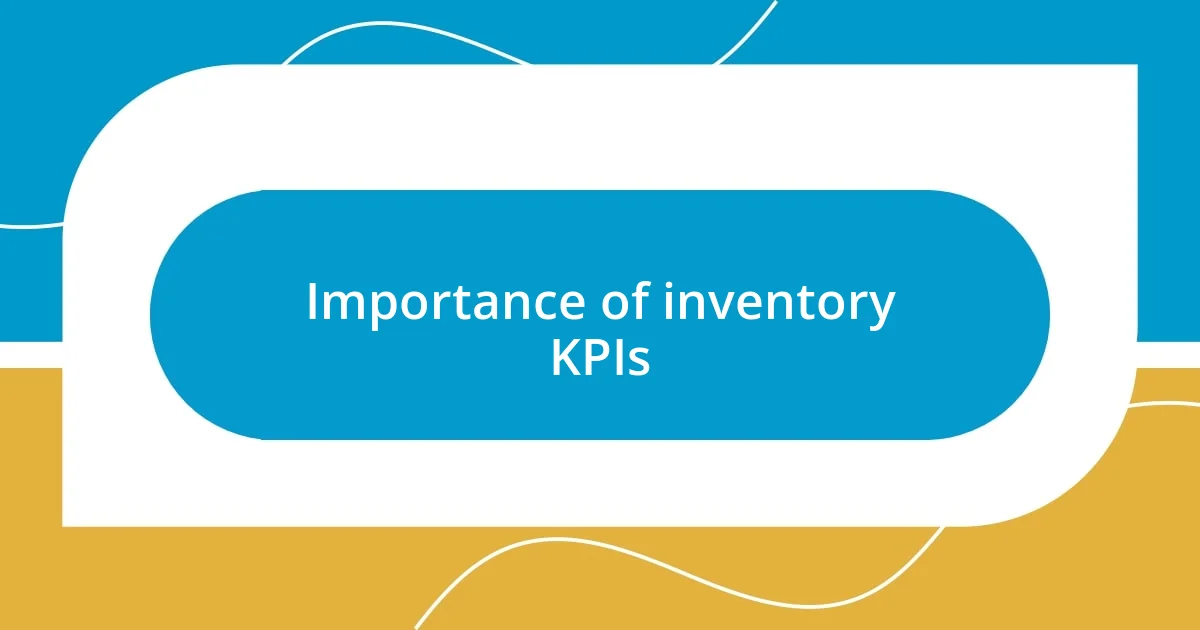
Importance of inventory KPIs
Inventory KPIs are crucial because they illuminate the areas that directly impact operational efficiency and financial health. I’ve witnessed firsthand the difference they can make; when I started tracking the Gross Margin Return on Investment (GMROI) for a small business I consulted with, the owner realized that certain products were draining resources instead of generating profit. This revelation was like suddenly flipping a light switch on in a dark room—it showed us where adjustments were needed.
- They help in identifying slow-moving items, allowing for timely discounts or promotions.
- Monitoring KPIs ensures better cash flow management, which is vital for sustaining a business.
- KPIs foster accountability within teams, promoting a culture of continuous improvement and optimization.
The emotional weight of managing inventory can feel daunting, but understanding these metrics empowers you to make strategic decisions. Remember the anxious moments when I helped a friend navigate overstock; tracking metrics not only alleviated financial strain but also restored his confidence in managing his resources effectively. Tracking these KPIs can lead to clarity and peace of mind, transforming chaos into control.

Key inventory KPIs to track
One key inventory KPI I often emphasize is the Fill Rate. I remember a time in a retail setup where we consistently faced stockouts. When I calculated our Fill Rate, it revealed we were fulfilling only 80% of customer orders. This metric indicates how often customer orders are filled completely and on time. It wasn’t just a number; it impacted customer satisfaction and brand loyalty tremendously. Have you ever pondered how stockouts might be affecting your business reputation?
Another important KPI is the Stockout Rate. Reflecting on my experience with a previous client, we discovered their rate was alarmingly high—around 15%. This KPI measures how frequently items are out of stock when customers try to purchase them. I’ve seen firsthand how stockouts can lead to lost sales opportunities and frustrated customers. Wouldn’t it be beneficial to understand how often your customers encounter this issue?
Lastly, I find the Average Inventory Age to be another essential KPI that shouldn’t be overlooked. Tracking this metric allows you to understand how long your items have been in stock. I once helped a business realize that certain products were sitting unused for months. This insight enabled them to take action, reducing aged inventory and freeing up cash flow. It’s incredible how much clarity comes from simply knowing the average age of your inventory.
| KPI | Description |
|---|---|
| Fill Rate | Measures the percentage of customer orders that are fulfilled fully and on time. |
| Stockout Rate | Indicates how often items are out of stock when customers wish to purchase. |
| Average Inventory Age | Calculates the average time products have been in stock, helping to identify slow-moving items. |
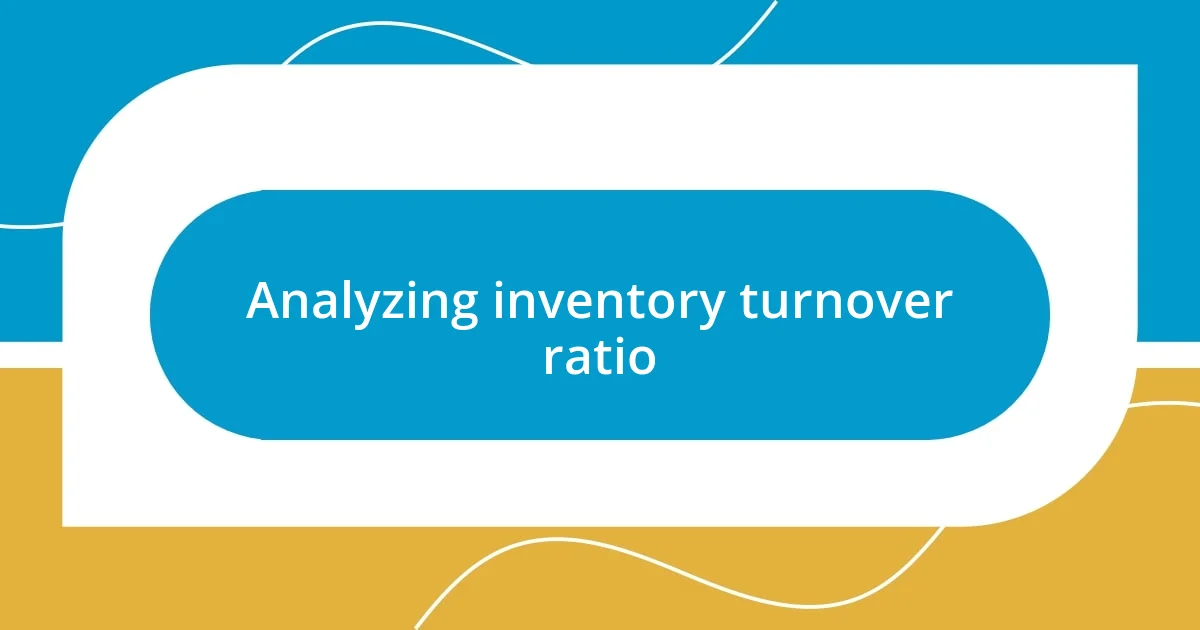
Analyzing inventory turnover ratio
Analyzing the inventory turnover ratio feels like peering into the health of a business. From my experience, this metric tells a compelling story about how effectively a company is selling its inventory. I remember working with a retailer struggling with excess stock. Once we calculated the inventory turnover ratio, it revealed the slow movement of their products, guiding us to refine their purchasing strategy.
What really struck me was the emotional shift that came with understanding this ratio. When the owner recognized that the inventory turnover was lower than industry standards, it sparked a sense of urgency to innovate. It’s astonishing how just a number can ignite a change in perspective—have you ever experienced that kind of awakening in your inventory system?
As we delved deeper into the analysis, we discussed the importance of balancing this ratio with customer demand. I’ve learned that aiming too high can lead to stockouts, potentially losing sales. Every time I analyze this ratio, I remind myself that it’s not just a figure. It’s about aligning inventory levels with market needs to ensure a brand thrives. Isn’t it fascinating how numbers can transform our operational strategies?
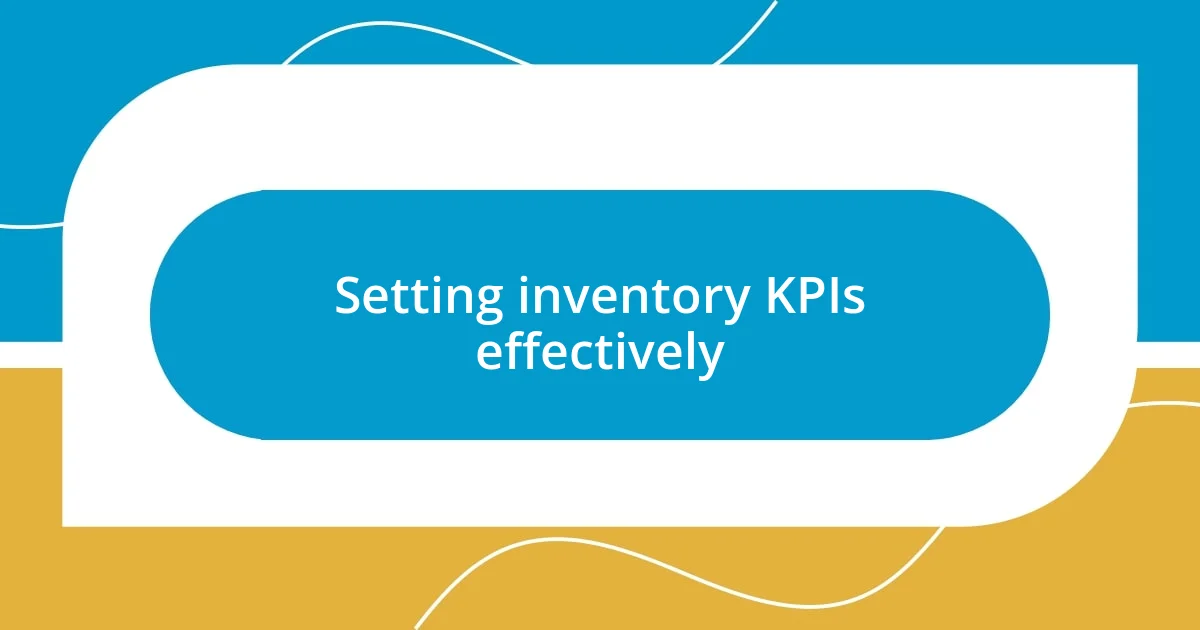
Setting inventory KPIs effectively
Setting inventory KPIs effectively starts with clear goals. In my experience, the first step is to identify what success looks like for your business. For example, when working with a startup, we set a Fill Rate target of 95%, knowing that exceeding this threshold would enhance customer satisfaction. How often do you assess whether your KPIs align with your overall objectives?
Another crucial factor is ensuring that KPIs are actionable and relevant. I recall a scenario where a client had a great average inventory age KPI, but it masked deeper issues. By diving deeper, we explored specific categories that weren’t moving, ultimately leading to informed decisions on promotions. Have you thought about which specific aspects of your inventory might require more focus?
Lastly, I believe it’s essential to communicate these KPIs across your team. Effective collaboration can drive better results. I once facilitated a workshop where we broke down KPIs, and it was enlightening to see different departments rally around shared goals. When everyone is on the same page, the entire business can thrive together. How well does your team understand the significance of your inventory KPIs?
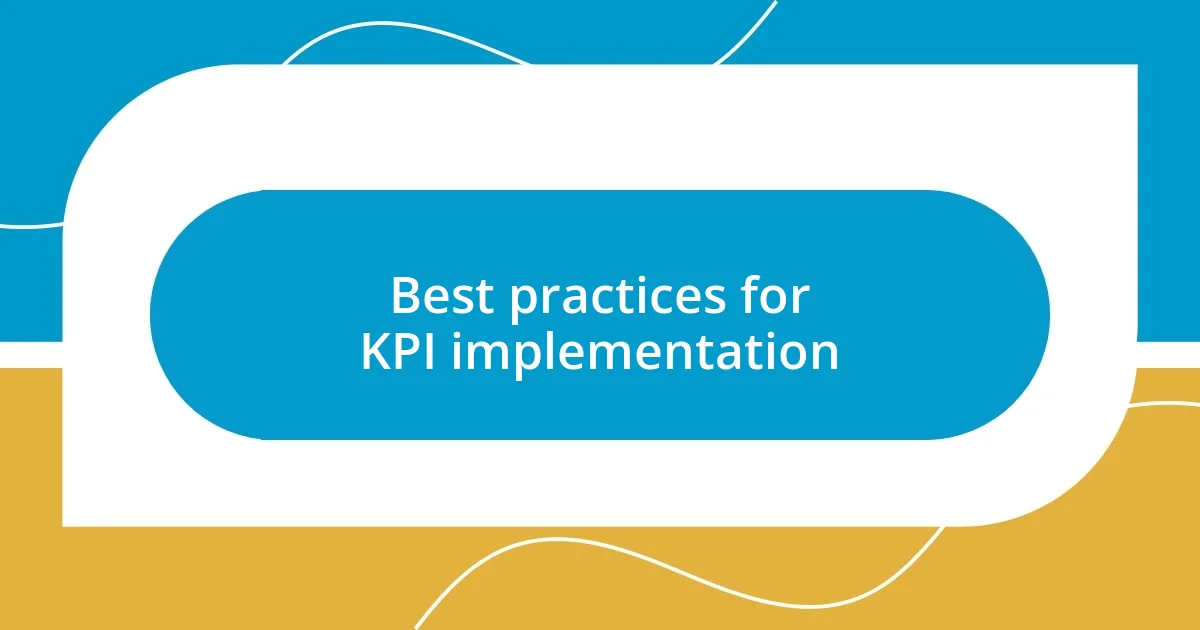
Best practices for KPI implementation
When implementing KPIs, it’s crucial to start small and focused. I remember a project where we introduced too many KPIs at once, leading to confusion rather than clarity. We learned that it’s better to prioritize a few key metrics that can drive immediate impact. What’s your experience with juggling multiple KPIs? Sometimes, less really is more.
Regular reviews of KPIs are essential, as I’ve discovered through my work with clients. One client, for instance, initially set their KPIs in isolation but learned the importance of revisiting them in response to market shifts. I’ve found that a quarterly review not only provides insights but also revitalizes the team’s focus on performance. Have you set a routine for reassessing your goals?
Lastly, fostering a culture of continuous improvement can significantly enhance KPI implementation. I once encouraged a team to celebrate small wins tied to their KPIs, and the resulting motivation was palpable. This emotional connection to success can drive individuals to push boundaries. How often does your team take time to recognize their achievements on the road to those targets?

Common pitfalls in inventory measurement
One common pitfall in inventory measurement is relying too heavily on a single KPI. I recall a company that focused solely on inventory turnover, celebrating high numbers without considering the implications. While a high turnover rate can seem impressive, it may indicate stock shortages or missed sales opportunities. Isn’t it insightful how a singular focus can obscure the bigger picture?
Another issue I’ve encountered is neglecting data accuracy. In one case, a client had impressive KPIs on paper, but the underlying data was a mess. It didn’t take long before discrepancies led to stockouts and customer complaints. Have you ever questioned the reliability of the data driving your KPIs? Trust me, it’s vital to ensure your numbers reflect reality; otherwise, you’re merely chasing shadows.
Lastly, I think many businesses underestimate the importance of context when analyzing KPIs. I once worked with a team that was thrilled about their decrease in dead stock. However, when looking deeper, we discovered that their sales were plummeting too. KPIs should never be viewed in isolation; they need to be interpreted within the broader business strategy. How often do you connect your KPI results back to your overall goals?














